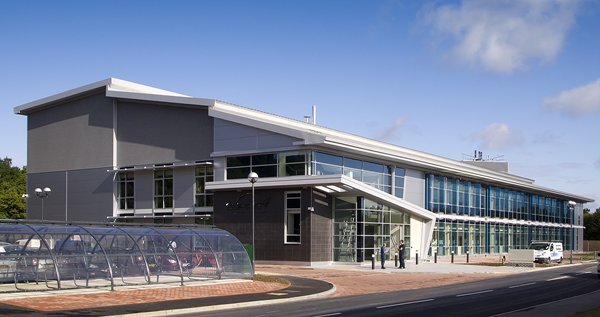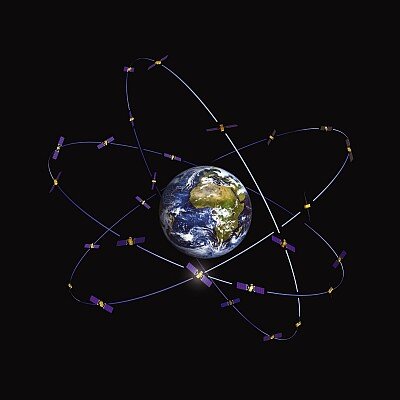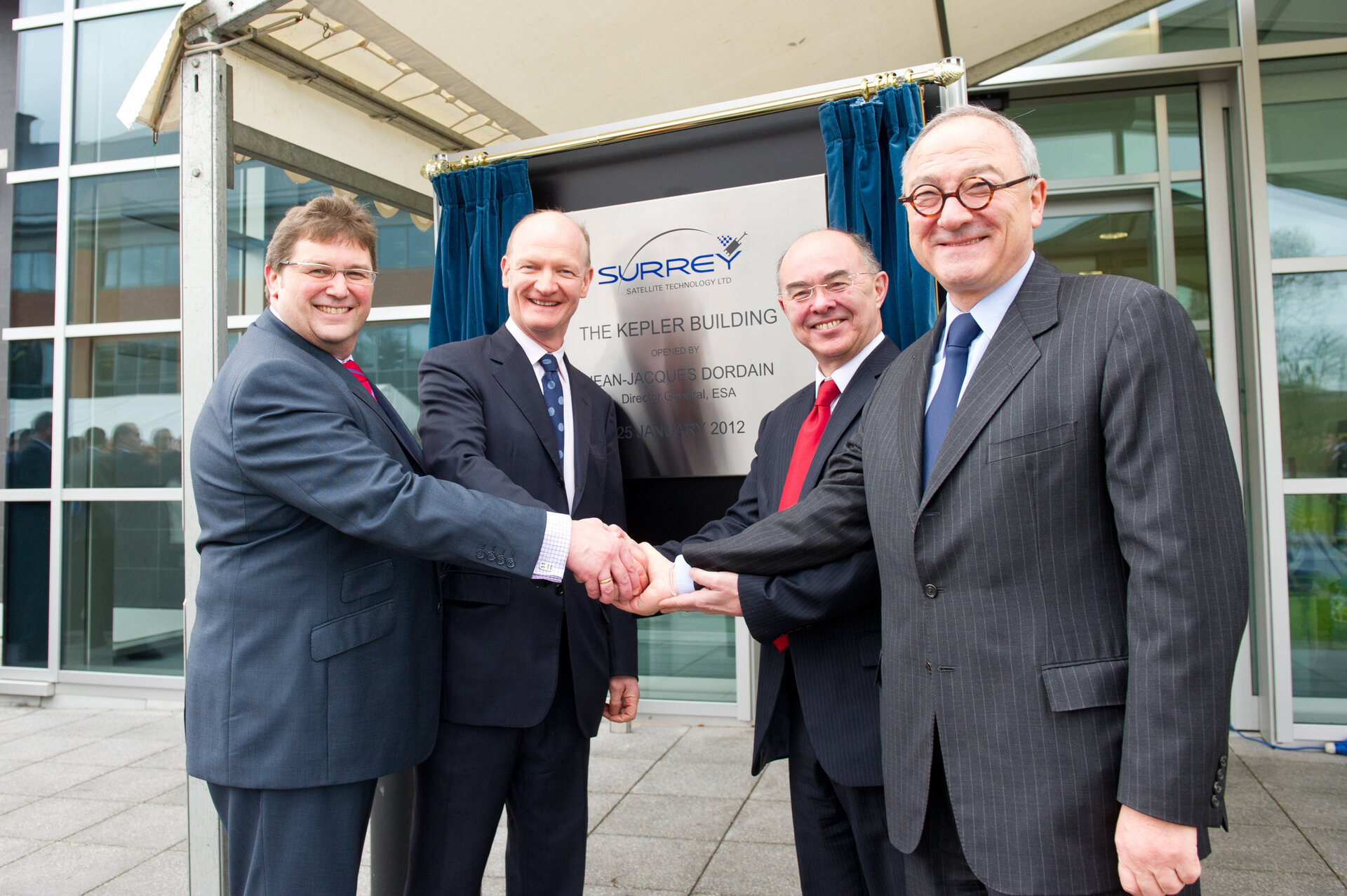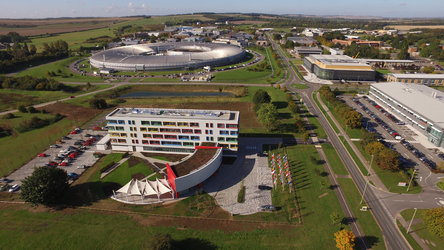Opening of UK site producing the heart of Galileo
The first Galileo satellites are already in orbit, with more on the way. Yesterday ESA’s Director General and the UK’s Universities and Science Minister attended the grand opening of the facility where navigation payloads for the next batch of Galileo satellites are being built.
UK company Surrey Satellite Technology Ltd (SSTL) in Guildford, Surrey, is assembling the payloads for the next 14 Galileo satellites. These follow on from the initial four, the second pair of which will be launched this autumn.
SSTL’s payloads are being built in a new state-of-the-art facility called the Kepler Building, based beside the company’s headquarters.
ESA Director General Jean-Jacques Dordain joined UK Universities and Science Minister David Willetts MP, and SSTL founder and Executive Chairman Sir Martin Sweeting for the formal unveiling of a commemorative plaque.
Mr Dordain expressed his wish that the new building would become the birthplace of many exciting and successful satellites, and a cornerstone to a space industry that the UK and Europe could be proud of.
“I have had the privilege of meeting David Willetts several times during the last year,” he added. “I am confident we will continue to pull in the same direction to boost the UK role in European space activities and ensure space remains a key driver of economic growth and scientific excellence.”
“The continued success of SSTL is a clear sign that our space industry is thriving,” said Minister Willetts.

“This impressive, high-tech new facility is already manufacturing some of the most advanced satellites in the world, boosting growth and helping the UK stay ahead of the game in space technology.”
After touring the 3700 sq. m building, Mr Dordain praised the commercial and technological innovations embodied by SSTL, noting its origin as a spin-off company from the University of Surrey.
“Responding to the technical and commercial challenges of space in a rapidly changing global marketplace, SSTL has grown to become a major industrial player in a short amount of time,” he said.
“Today, SSTL sells satellites and services to customers all over the world, including ESA, with 36 satellites launched to date.
“While doing so, SSTL continues to demonstrate agility and innovation, two factors that are essential for competitiveness and growth.
“It is reassuring that UK industry, government and academia continue to pursue ways of utilising an innovative space sector as an engine of economic growth.”

Mr Dordain commented that the creation of the UK Space Agency, the UK government’s investment in the International Space Innovation Centre in Harwell, as well as the recent announcement of a Space Applications Catapult Centre to develop satellite technology and applications, were all welcome signs of a re-energising UK space sector.
He added that the 2009 opening of ESA’s Harwell Centre aims to support this development in the interest of both the UK and ESA as a whole, noting that the evolution of ESA’s UK presence would also be driven by the outcome of ESA’s Council of Ministers due to meet towards the end of this year, at which a wealth of opportunities will be available for the UK to get involved with and shape future ESA programmes.
Note for editors
SSTL first became involved in the Galileo programme at an early stage, building the prototype navigation satellite GIOVE-A, which was built to a strict deadline to secure radio frequencies provisionally reserved for Galileo.
The company used this experience to help bid for the payload elements of the Galileo Full Operational Capability contract. The completed payloads will be integrated with satellite platforms by prime contractor OHB in Bremen, Germany.
SSTL continues to operate GIOVE-A under ESA contract, now entering its sixth year of operations. It is contributing instruments to ESA’s EarthCARE and Sentinel-5P Earth observation missions and is developing a geostationary minisatellite platform through ESA Telecom’s Advanced Research in Telecommunication Studies (ARTES) programme.
The company is also performing various future ESA mission studies and is managing the Agency’s European Student Mission to the Moon (ESMO).






